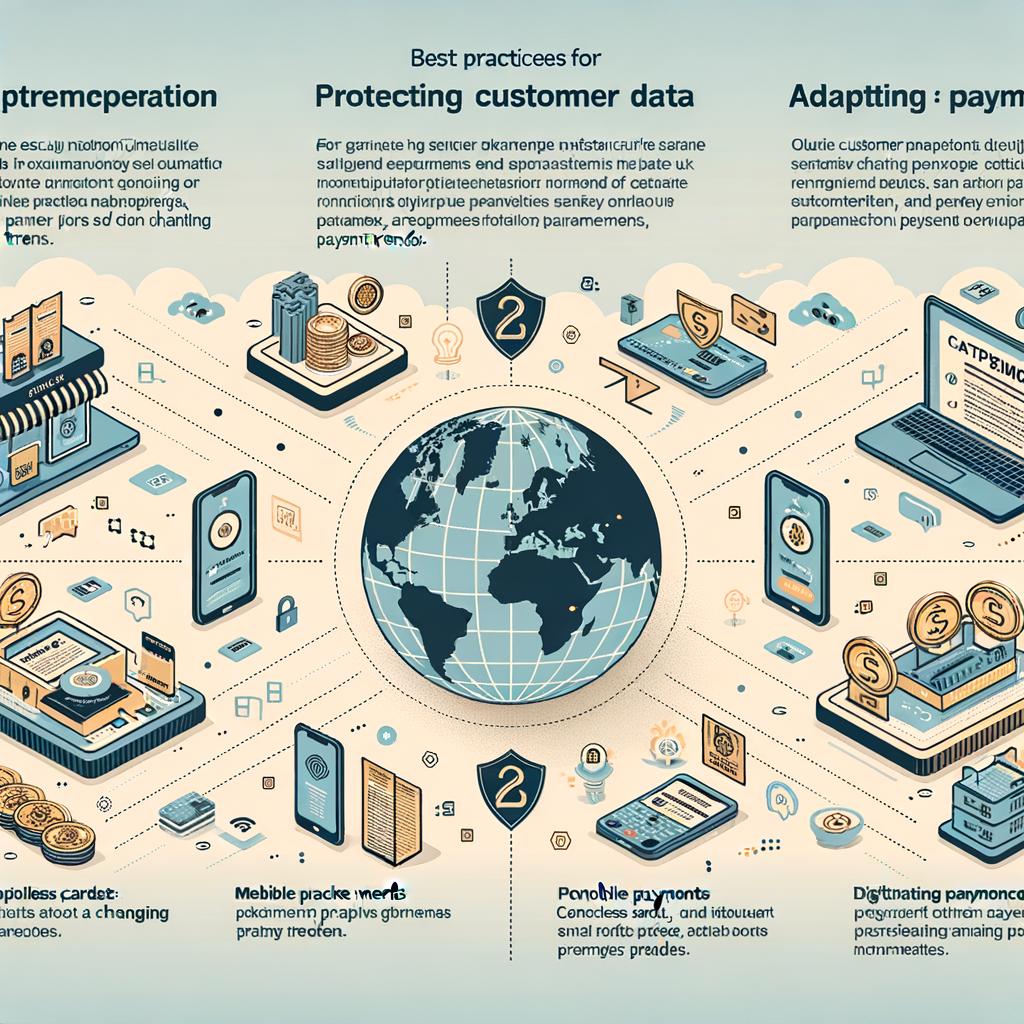The Evolution of Payment Security Standards: What’s New in PCI DSS?
Hey there, fellow tech enthusiasts and cyber warriors! Are you ready to dive into the ever-evolving world of payment security standards? Well, buckle up because we’re about to take a ride through the latest updates and changes in PCI DSS. From chip cards to encryption, we’ll explore what’s new and what you need to know to keep your transactions secure. So grab your virtual seatbelt and let’s explore the evolution of payment security standards together!
– The Rise of Contactless Payments and Its Impact on PCI DSS Compliance
The Evolution of Payment Security Standards: What’s New in PCI DSS?
With the rise of contactless payments, the landscape of payment security is constantly evolving. The Payment Card Industry Data Security Standard (PCI DSS) is no exception, facing new challenges and requirements to ensure the safety of sensitive payment data. As more consumers opt for contactless payment methods, businesses must adapt to these changes to maintain PCI DSS compliance and protect their customers’ information.
One of the key impacts of contactless payments on PCI DSS compliance is the need for updated security measures. Traditional payment processing methods may not be adequate to protect against the risks associated with contactless transactions. This has led to the introduction of new guidelines and best practices for securing contactless payment data. Businesses are now required to implement additional security protocols, such as encryption and tokenization, to ensure the confidentiality and integrity of payment information. Staying informed about these evolving standards is essential for businesses to adapt and maintain compliance in the ever-changing payment security landscape.
– Understanding the Latest Updates in PCI DSS 4.0 and What You Need to Know
The latest version of PCI DSS, version 4.0, brings some significant changes and updates to the world of payment security standards. One key aspect to understand is the increased focus on security and risk management, with organizations now being required to regularly review and update their security policies and procedures to ensure compliance with the new standards. Additionally, there is a stronger emphasis on the importance of implementing encryption technologies to protect sensitive data, such as cardholder information, from cyber threats.
Under PCI DSS 4.0, businesses will also need to pay closer attention to their third-party service providers, ensuring that they are also compliant with the latest standards to prevent any vulnerabilities in the payment processing chain. Another notable change is the requirement for organizations to conduct regular penetration testing and vulnerability scans to identify and address any potential weaknesses in their systems. With these updates, it is crucial for companies to stay informed and proactive in order to maintain a secure payment environment for their customers.
– Best Practices for Protecting Customer Data and Adapting to Changing Payment Trends
Payment security standards are constantly evolving to keep up with the ever-changing landscape of cyber threats. As businesses adapt to new payment trends, it’s crucial to stay up to date with the latest best practices for protecting customer data. One key standard that has been at the forefront of payment security is the Payment Card Industry Data Security Standard (PCI DSS).
Recent updates to PCI DSS have included enhancements to encryption protocols, requirements for multi-factor authentication, and guidelines for securing e-commerce transactions. By following these new standards, businesses can better protect sensitive customer data and reduce the risk of data breaches. It’s important for businesses to regularly review and update their security protocols to ensure they are in compliance with the latest PCI DSS requirements.
– Navigating the Complex World of Online Transactions and Ensuring Secure Payment Processing
Have you ever wondered how your online transactions are kept secure? With the constant evolution of payment security standards like PCI DSS (Payment Card Industry Data Security Standard), it’s important to stay up-to-date on the latest changes to ensure secure payment processing. One of the newest updates to PCI DSS is the requirement for multi-factor authentication, adding an extra layer of security to verify the identity of users.
Another key change in PCI DSS is the focus on encrypting cardholder data both in transit and at rest. This helps prevent unauthorized access to sensitive payment information, reducing the risk of data breaches. By following these updated security standards, businesses can navigate the complex world of online transactions with confidence, knowing that they are taking the necessary steps to protect their customers’ payment information.
Future Outlook
As we have seen, the evolution of payment security standards like PCI DSS is crucial in our ever-changing digital landscape. By staying updated on the latest developments and requirements, businesses can better protect their customers’ sensitive data and prevent costly breaches. Remember, when it comes to payment security, it’s always better to be proactive than reactive. Stay informed, stay compliant, and keep those cyber criminals at bay. Here’s to a more secure future in the world of digital transactions!






